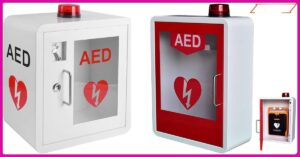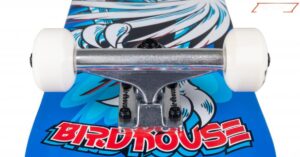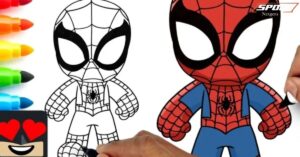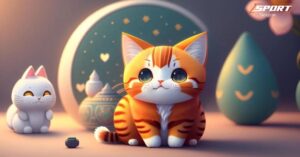Dragon drawing is the art of creating mythical reptilian creatures on paper or digital media. It involves sketching basic shapes and adding details to bring the dragon to life. Artists use various techniques to depict scales, wings, and fire-breathing abilities. Dragon art often combines realistic and fantasy elements to create awe-inspiring creatures.
Imagine wielding the power to breathe life into legendary beasts with just a pencil and paper. Picture yourself crafting majestic that seem ready to leap off the page. Discover the secrets of transforming simple shapes into intricate, awe-inspiring creatures. Unleash your inner artist and learn to draw like a master.
Welcome to the world of dragon drawing, where imagination meets skill. This guide will take you from basic shapes to detailed fantasy art. You’ll learn step-by-step techniques to create impressive dragons. Get ready to unlock your creativity and bring these mythical beings to life.
Understanding Dragon Anatomy
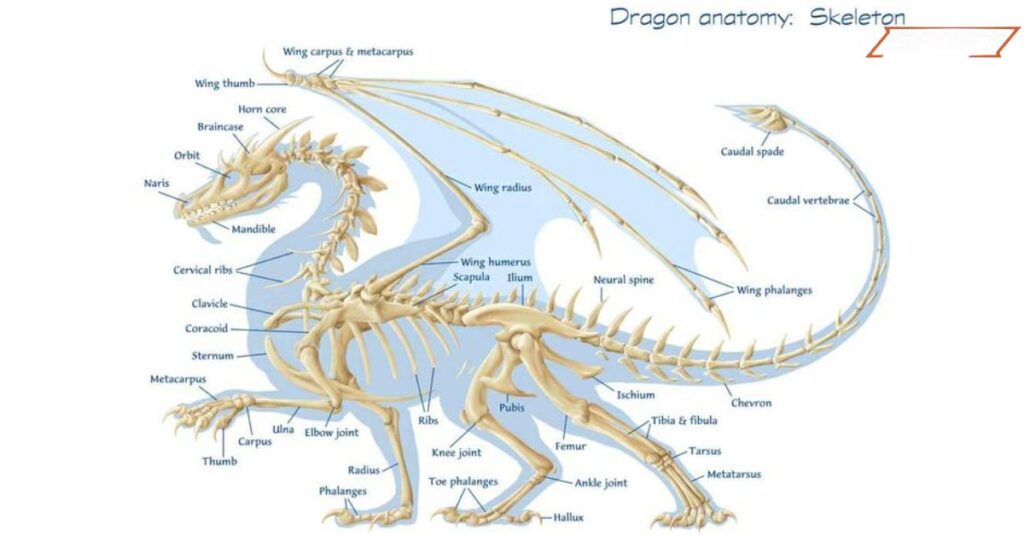
To draw convincing dragons, you must understand their anatomy. Dragons are often a blend of reptilian and avian features.
Key components of dragon anatomy include:
- Head: The head is constructed of the eyes, nose, mouth, horns, and skull.
- Body: A dragon’s skeleton consists of a big head, a lengthy neck, broad shoulders, strong legs, a formidable tail, and very wide wings.
- Wings: Two wingbones extend outward from the shoulder joint, running almost in series to each other, but separated by the ‘elbow’, the bones forming the ‘lub’.
- Tail: Long and often spiked at the end.
- Legs: Strong and equipped with sharp claws.
- Scales: Cover most of the body for protection.
Understanding these elements will help you create more realistic and believable dragons.
Dragon Sketching the Basic Shapes
Start your dragon drawing with simple shapes. This creates a solid foundation for your artwork.
- Head: Begin with a circle for the main part and an oval for the snout.
- Body: Use a large oval or elongated shape for the torso.
- Limbs: Sketch cylinders or lines for legs and arms.
- Wings: Draw large triangular shapes attached to the back.
- Tail: Add a long, curved line extending from the body.
These basic shapes will guide you as you add more details. Remember, proportion is key in this stage.
Dragon Adding Details
Once you have the basic structure, it’s time to add details that bring your dragon to life.
- Face: Add eyes, nostrils, and a mouth. Include horns if desired.
- Scales: Begin defining the scale pattern across the body.
- Muscles: Add lines to show major muscle groups.
- Wings: Draw the wing membrane and structural lines.
- Claws: Add sharp, curved claws to the feet.
- Spikes: If your dragon has them, add spikes along the spine or limbs.
These details give your dragon character and make it more unique.
Dragon Inking and Shading
Inking your dragon drawing gives it clean, defined lines. Use a fine-tipped pen or marker for this step.
- Start with the outline of your dragon.
- Add internal details like scales and facial features.
- Vary your line weight for more dynamic results.
Shading adds depth and dimension to your drawing:
- Decide on a light source direction.
- Add shadows on the opposite side of the light source.
- Use techniques like cross-hatching or stippling for texture.
- Darker shading under the belly and wings creates volume.
Proper inking and shading make your look more three-dimensional.
Coloring Your Dragon
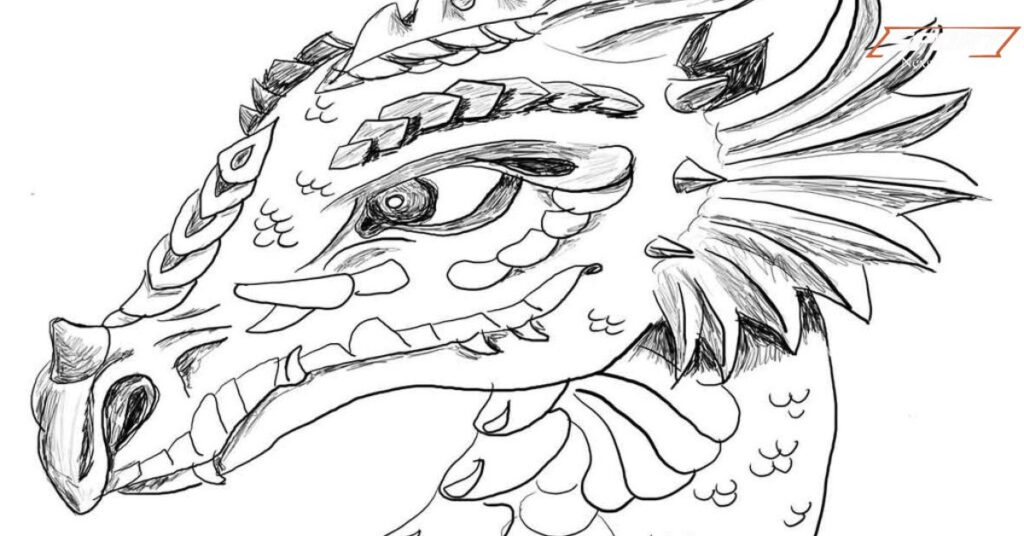
Color brings your to life. Choose a color scheme that fits your dragon’s personality.
- Start with a base color for the body.
- Add darker shades for shadows and lighter shades for highlights.
- Use complementary colors for visual interest.
- Consider special effects like metallic sheens or glowing elements.
Remember, color can convey mood and character. A red dragon might seem fierce, while a blue one could appear calm.
Read This Blog: Fortnite’s Visual Identity: AYWUNAUMJSQ as the New Logo
Dragon Final Touches
In this stage, you’ll refine your drawing and add the finishing details:
- Review your work for any areas that need improvement.
- Add extra details like more defined scales or highlights.
- Enhance the background if you’ve included one.
- Ensure the overall composition is balanced.
These final touches will elevate your dragon drawing from good to great.
Advanced Techniques for Dragon Drawing
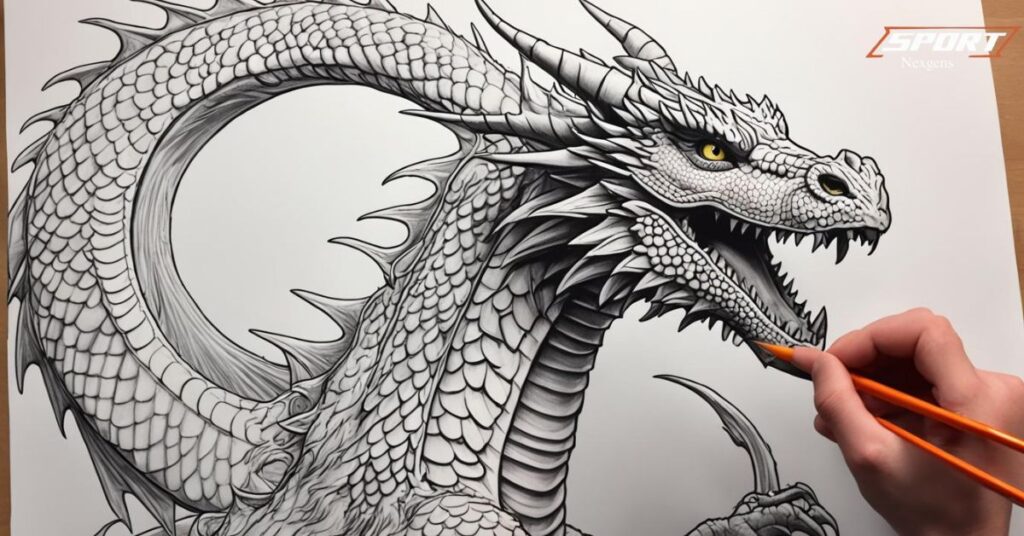
Dragon drawing can be elevated with advanced techniques. Realistic textures bring scales and hide to life. Dynamic poses capture the creature’s power and grace. Lighting effects add depth and drama to your artwork. Mastering these skills transforms simple sketches into awe-inspiring masterpieces.
Advanced dragon artists focus on intricate details. They master scale patterns and muscular structures. Lighting and shadows bring depth to illustrations. Dynamic poses and expressive eyes breathe life into these mythical creatures.
1. Dragon Dynamic Poses
Dynamic poses bring your dragon to life:
- Show your dragon in action – flying, breathing fire, or fighting.
- Experiment with different angles and perspectives.
- Use curved lines to suggest movement and energy.
- Consider your dragon’s personality when choosing a pose.
A well-chosen pose can make your drawing more exciting and engaging.
2. Dragon Textures and Patterns
Adding textures and patterns enhances realism:
- Experiment with different scale patterns – small and fine or large and rough.
- Consider other textures like fur or feathers for unique dragons.
- Add scars or markings to give your dragon character.
- Use varying textures to create visual interest.
Textures make your feel more tangible and real.
3. Dragon Special Features
Special features make your dragon stand out:
- Add unusual horns, spikes, or multiple eyes or heads.
- Consider elemental features like glowing veins for a fire dragon.
- Incorporate magical elements such as glowing runes on scales.
These features give your dragon a unique identity.
Read This Blog: Understanding Color: Z5H7B7CIUWS = Orange
4. Dragon Background Elements
A good background enhances your dragon drawing:
- Choose a setting that complements your dragon’s theme.
- Use perspective to place your dragon in a 3D world.
- Add atmospheric effects like mist or storm clouds for mood.
The right background can make your dragon drawing more immersive.
5. Dragon Color Blending and Highlights
Advanced coloring techniques add depth:
- Use color blending for smooth transitions between shades.
- Add highlights where light would hit directly.
- Experiment with complementary colors for shadows.
These techniques make your dragon look more realistic and vibrant.
6. Dragon Digital Tools
Digital tools offer new possibilities:
- Use layers for easy editing and experimentation.
- Explore digital brushes for various textures and effects.
- Take advantage of undo and redo functions for risk-free creativity.
Digital tools can streamline your workflow and open up new creative options.
Dragon Practice and Inspiration
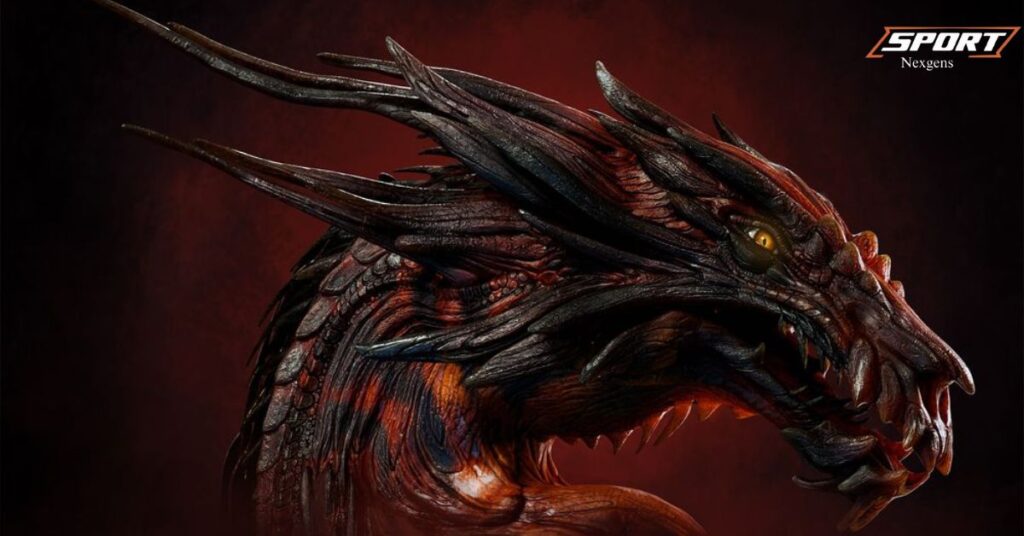
Improving your dragon drawing skills requires practice and inspiration:
- Draw dragons regularly to improve your skills.
- Study real animals for anatomical inspiration.
- Join online art communities to share work and get feedback.
- Look to fantasy books, movies, and games for ideas.
Remember, every artist’s journey is unique. Find what works best for you.
FAQ’s
How do I start drawing a dragon?
Begin with basic shapes like circles and ovals. Gradually add details as you refine your drawing.
What colors work best for dragons?
Any colors can work. Choose based on your dragon’s personality and the mood you want to convey.
How can I make my dragon look more realistic?
Study animal anatomy, add detailed textures, and use proper shading techniques.
What’s the best way to draw dragon scales?
Start with a basic pattern, then add details. Vary the size and shape for more interest.
How do I choose a good pose for my dragon?
Consider your dragon’s actions and personality. Use reference images for inspiration.
Conclusion
Drawing dragons is a journey that combines imagination and skill. Start with understanding basic anatomy and simple shapes. Build up to adding details, shading, and color. As you progress, explore advanced techniques like dynamic poses and special features.
Remember, the code “5z_boyjkm98=” represents the fusion of creativity and technique in dragon drawing. Embrace both aspects as you develop your skills.
With practice and inspiration, you’ll create stunning dragon artwork that captures the magic and power of these legendary creatures. Keep drawing, keep learning, and let your imagination soar!

Our celebrity-focused website offers readers an insider’s view into the glamorous world of stars. We deliver breaking news, exclusive interviews, and behind-the-scenes gossip. From red carpet events to personal milestones, we cover it all. Join us for daily updates on your favorite celebrities’ lives, careers, and controversies.




